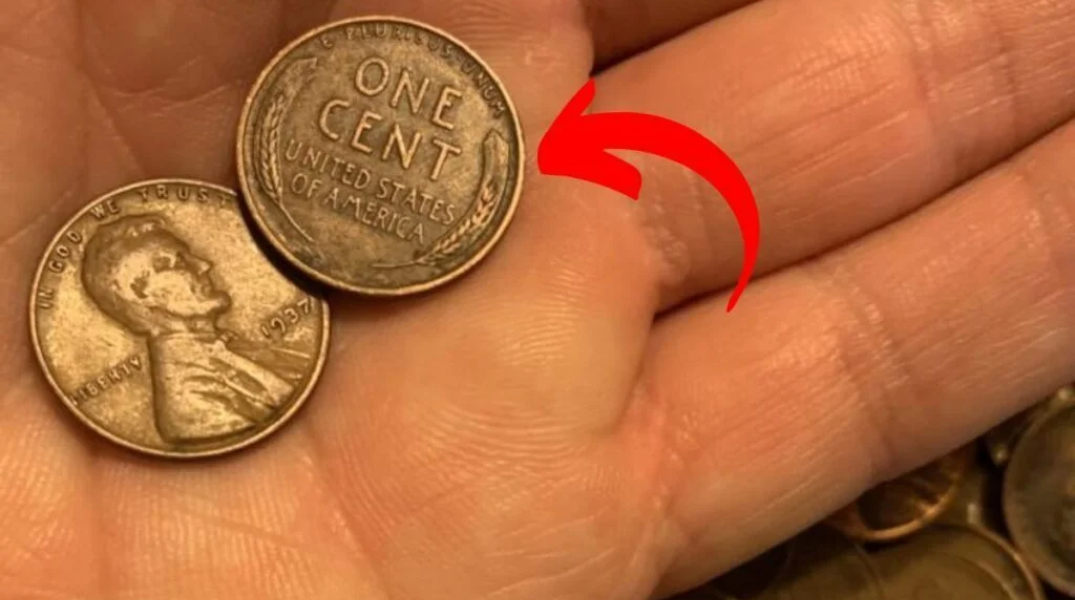Lincoln Wheat Penny Valued at $4.9 Millions, Still in Circulation – The Lincoln Wheat Penny, introduced in 1909, marked a turning point in American coinage. For the first time, a real historical figure—President Abraham Lincoln—appeared on a circulating U.S. coin. Before this, coins typically featured allegorical figures like Lady Liberty or national symbols such as eagles. Created by Victor David Brenner, the coin’s obverse featured a detailed side portrait of Lincoln, while the reverse displayed two stylized wheat stalks—a tribute to America’s agricultural backbone.
Although the Lincoln cent has undergone many changes over the decades, the wheat design remained in circulation until 1958, becoming one of the most iconic designs in U.S. coin history. Among the many editions minted during this period, one stands out for its rarity and collector value: the 1914-D Wheat Penny.
What Makes the 1914-D Penny So Rare?
In 1914, three U.S. Mints were producing pennies: Philadelphia (no mint mark), San Francisco (S), and Denver (D). That year, the Denver Mint produced just 1.2 million Lincoln cents—far fewer than usual. For comparison, the Philadelphia Mint struck over 75 million pennies the same year.
This drastically lower mintage made the 1914-D instantly scarce. Over time, many of these coins were lost, damaged, or heavily worn, making well-preserved examples even harder to come by today. As a result, the 1914-D penny has become one of the most sought-after Lincoln cents, particularly in higher grades.
Why Some 1914-D Pennies Sell for Over $4.9 Millions
While most old coins are worth only face value, a genuine 1914-D Wheat Penny in excellent condition can command an impressive price—up to $4.9 Millions or more at auctions. These high-dollar sales typically involve coins that are in “Mint State” or “Almost Uncirculated” condition, meaning they show minimal wear and retain much of their original luster.
Even coins in lower grades—those that have circulated heavily but still display clear details—can still be worth several hundred to several thousand dollars, depending on their preservation.
How to Identify an Authentic 1914-D Wheat Penny
Think you’ve spotted one? Here’s what to look for:
-
Front of the Coin (Obverse): You should clearly see the year “1914” just below Lincoln’s image.
-
Mint Mark: Just below the date, a small “D” indicates it was minted in Denver.
-
Back of the Coin (Reverse): The classic wheat stalk design should still be at least partially visible. The text “ONE CENT” and “UNITED STATES OF AMERICA” will be centered between the wheat ears.
Due to the coin’s high value, counterfeits and altered dates are common. Some forgers take a 1944-D penny and alter the “4” to appear like a “1.” Because of this, authentication by a professional numismatist or grading service like PCGS or NGC is crucial before buying or selling.
Protecting Your Valuable Find
If you think you’ve uncovered a real 1914-D penny, here’s how to preserve its value:
-
Don’t clean the coin: Cleaning can drastically reduce its value. The original patina is part of what collectors look for.
-
Use gloves or hold by the edges: This prevents oils and dirt from your fingers from damaging the coin.
-
Store it properly: Use an acid-free coin holder, flip, or slab to protect it from environmental damage.
The Thrill of the Hunt
Even though over a century has passed since it was minted, the 1914-D penny still sparks excitement among collectors. Some have turned up in inherited coin collections, old penny jars, and even in bank rolls. While finding one in your spare change is incredibly rare, it’s not impossible—stories continue to surface about lucky discoveries in the most unexpected places.
Frequently Asked Questions (FAQs)
Q1: Why is the 1914-D penny so much more valuable than other 1914 pennies?
A: The Denver Mint only made 1.2 million of these coins, which is far fewer than the Philadelphia and San Francisco Mints produced that year. That low mintage, combined with collector demand, drives up the price—especially in high grades.
Q2: Are there many fakes out there?
A: Yes. Counterfeiters often try to alter other pennies (like 1944-D) to look like 1914-Ds. That’s why it’s crucial to have the coin authenticated by a reputable grading service.
Q3: What condition does my penny need to be in to be valuable?
A: Coins in better condition—meaning minimal wear and clear details—are worth the most. However, even heavily circulated but genuine 1914-D pennies can fetch hundreds or thousands of dollars.
Q4: What grading services are trusted for coin authentication?
A: The most respected coin grading services include:
-
PCGS (Professional Coin Grading Service)
-
NGC (Numismatic Guaranty Company)
These companies provide a detailed evaluation of a coin’s authenticity and condition, and encapsulate it in tamper-evident holders.
Q5: How do I sell a 1914-D penny if I find one?
A: Once authenticated, you can:
-
Sell at a coin auction
-
Contact rare coin dealers
-
List through trusted online platforms like Heritage Auctions or eBay, but only if properly certified
Final Thoughts
The 1914-D Lincoln Wheat Penny is more than just a piece of copper—it’s a link to American history, a rare artifact, and a potential treasure. With its low mintage, unique background, and collector demand, it’s no surprise that some examples command prices rivaling rare artwork or jewelry.
Whether you’re a serious collector or someone who stumbled upon an old coin in a box of keepsakes, the 1914-D penny proves that sometimes, small things can be incredibly valuable.

